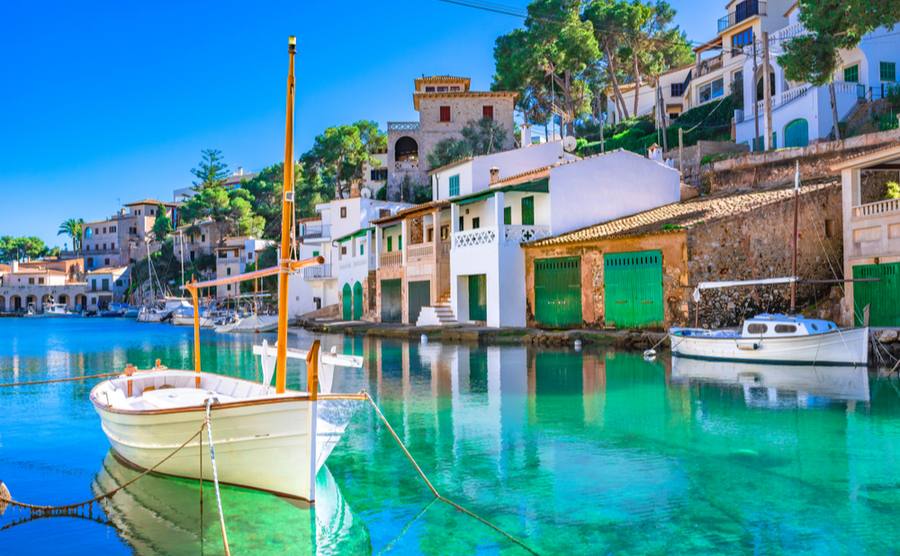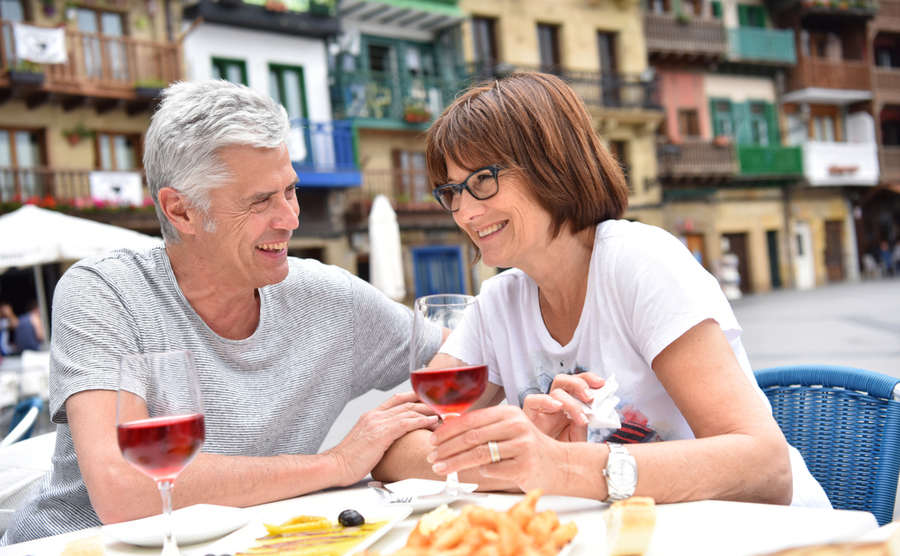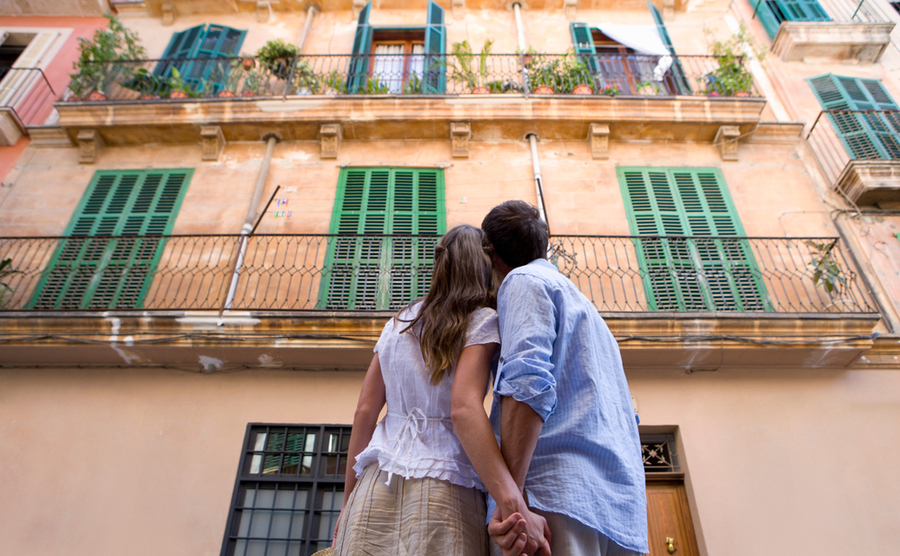Is there a more exciting place to retire to than Mallorca? It may be more well-known as a holiday option, but Mallorca has a large year-round population, including plenty of energetic retirees.
What makes Mallorca/Majorca so special is its wide range of things to do, all within easy reach. It has mountains and plains, cliffs and golden sandy beaches. It has pretty mountain villages and dozens of little harbours, each with a family restaurant or two.
SEARCH for properties in Mallorca
The largest of the Balearic islands, Mallorca sits in the Mediterranean roughly on the same level as Valencia. It has long been a playground for northern Europeans, and has successfully shed its once-downmarket reputation to be an extremely desirable place to retire for a global population.
What will your life be like?
For anyone craving a vibrant and healthy retirement, Mallorca is a safe bet. It has a ready-made international community so you need never be bored, lonely or isolated. People are friendly, the vast majority speak English, and the whole ambience is fun and adventurous.
Retiring abroad needn’t be stressful. Spain Property Guides can put you in touch with the most trusted lawyers and estate agents. Click here for total peace of mind.
Move here and you’ll probably soon be reading the Majorca Daily Bulletin to see what is happening in the expat community. There are plenty of other websites and community groups too. Check out meetup.com to find dozens of ways to meet like-minded people on the island.

Cala Figuera, in Mallorca’s south-east
An island for the energetic
Mallorca attracts well-heeled and active retirees from around the world – especially the UK, Germany and Nordic countries. Unlike some costas, which can be a bit snoozy, Mallorca is popular with more active retirees. Its mountain roads are full of MAMILs (“middle-aged men in lycra”). You’ll see – shock-horror – people swimming out of season. At its coldest, the sea temperature off Mallorca is 14°C, which isn’t far off UK temperatures in the height of summer.
There are plenty of smaller harbours dotted around the island where you needn’t feel quite so intimidated as you take up the hobby!
You can be sailing, swimming or diving. Mallorca has mountains too, so you can be walking, cycling or even horse-riding. It has around 20 golf courses, covering the whole island. As you might expect from the island where Rafa Nadal was born – and still lives – there are plenty of tennis clubs too. Many have spas and salons attached, and form a social hub, especially for expatriates.
Don’t risk wasting any of your savings when you retire abroad, Read The Currency Guide to Emigration, free to download.
Yachting is another big part of Mallorquin society. While there are exclusive marinas like Puerto Portals – you’ll often see a member of one Royal family here or another – there are plenty of smaller harbours dotted around the island where you needn’t feel quite so intimidated as you take up the hobby!
Palma de Mallorca
Its capital, Palma de Mallorca is one of the most beautiful cities in Spain – home to half of the island’s 900,000 permanent population. Here you’ll find the 12th century cathedral and a classy old town. You’ll love getting lost down its alleyways, spying the honey-coloured courtyards that date from the city’s early-medieval Moorish period.
Palma has a wonderful café culture, as well as ramblas and streets full of Spain’s most high-end boutiques. Or just stroll down to Palma’s beach for a dip.

Your relaxed retirement in Mallorca
Climate
Retire to Mallorca and you will experience all four seasons. Unlike the Canary Islands, the Balearics do get chilly in winter, occasionally, but the influence of the Mediterranean keeps the worst of the cold weather away. So it’s very rarely frosty, unlike the mainland. The average January low is 8°C, compared to Barcelona where it is 4°C and even Malaga where it is 7°C. Summers are, of course, hot and sunny!
It’s very rarely frosty, unlike the mainland. The average January low is 8°C, compared to Barcelona where it is 4°C and even Malaga where it is 7°C.
Palma has around 2,750 hours of sunshine per year (around double that of much of the UK).
Not ready to retire yet? Then why not start with a holiday home? Download your free guide, How to Buy a Holiday Home in Spain.
Mallorca’s property market
What has been happening with prices over the past couple of years? According to one detailed study, prices in Mallorca stand at around 8% higher than in 2018.
Property prices
The study found that the average price is nearly €5,500 per square metre (psm) across the island. This ranges from around €3,400 to €4,500psm in the middle, north and east of the island, to around €6,000-7,200 around Palma and the west. That would suggest a 70 square metre apartment costing well over €350,000.
In reality, however, look on any website and you’ll find hundreds of lovely homes at far below that price.
For a one-bedroom apartment you can buy as little as €50,000, especially on the eastern side of island around Calas de Mallorca. Push the budget to €100,000 and you might get two bedrooms or a single bedroom with a terrace, somewhere like Alcúdia.
For a good choice of apartments, however, especially on a resort that isn’t besieged by tourists all summer and empty all winter, you’ll need a budget of around €200,000 to €300,000.

Your property in Palma?
Moving upmarket
When you get to a budget of €400,000-plus you can start looking at apartments in the beautiful old town of Palma, or in areas like Illetes, Santa Ponsa and Pollença.
That’s also a realistic starting budget for a classic Spanish villa with pool and gardens. The inland areas of Mallorca used to offer a good choice of farmhouses, but many have been snapped up these days. That’s because nowhere is truly remote in Mallorca. It’s all within an hour or so of the airport.
You could also consider a Mallorcan country estate. Known as posesiónes, these aristocratic estates can be found for the low millions, and in the best areas for €3million or so.
Villas in areas like La Mola, Puerto de Andratx and Son Vida are also in this price bracket.
Getting here
The ease of getting to and around Mallorca is one its greatest advantages; certainly compared to islands like Menorca, Corfu or Rhodes. There are flights to Mallorca from almost every corner of the UK, all year. The flight itself is just over two hours from the UK, and once you’re here the transfer time even across the other side if the island is barely more than an hour.












